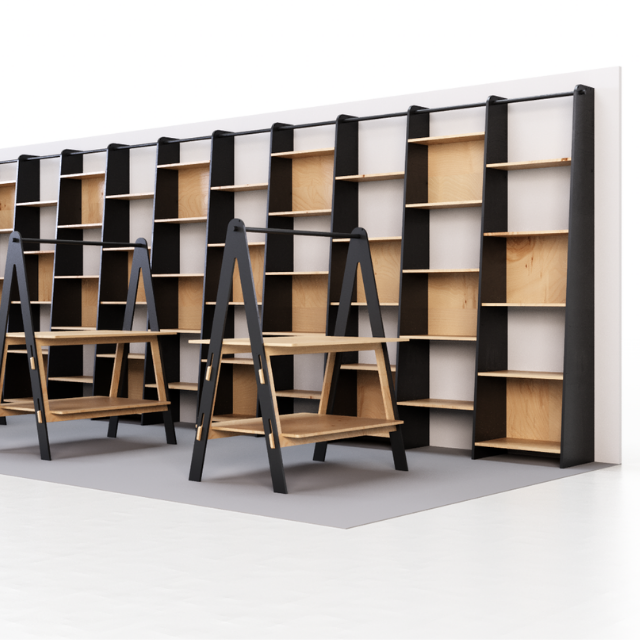
Wood vs. Cardboard Displays: Choosing the Most Sustainable Option for Your Retail Strategy
When it comes to choosing the right materials for your retail display stands, both wood and cardboard offer unique benefits. Each material serves a different purpose—whether you're looking for long-term, branded shop displays or temporary, seasonal setups. But which is more sustainable?
At CWD Shop Displays, we’re committed to helping brands find the right balance between function, aesthetics, and environmental responsibility. Here's a breakdown of how wooden displays compare to cardboard displays in terms of sustainability, carbon footprint, and lifecycle performance.
Wooden Displays
If you're seeking a durable, sustainable, and visually appealing display that elevates your brand, wood is the perfect choice. It’s ideal for long-term in-store displays, permanent shop fixtures, and premium retail environments where quality and craftsmanship matter.
Cardboard Displays
For cost-effective, lightweight, and easily customizable display units, cardboard is great for temporary promotions, pop-up events, or seasonal retail campaigns. It's quick to produce, easy to transport, and can be printed to match your branding.
1. Production & Manufacturing Impact
Wood Displays
: Trees absorb CO2 as they grow. When harvested and used for wooden retail displays, this carbon remains stored—making wood a carbon-negative material.
: The production of wooden display stands is far less energy-intensive than other materials. Especially when locally sourced, the environmental impact during production is significantly reduced.
Cardboard Displays
: Creating cardboard requires tree harvesting, pulping, and paper processing—all of which consume high amounts of energy and water.
: Though lightweight, cardboard’s manufacturing process results in notable CO2 emissions upfront, especially when produced at large scale.
2. Lifespan & Durability
Wood Displays
: Wooden displays for shops are built to last, reducing the need for frequent replacements. This long lifespan translates to lower overall emissions and fewer resources used over time.
: At the end of their life, wood displays can be recycled, repurposed, or used for bioenergy. As wood decomposes, it releases carbon gradually, contributing to a more sustainable carbon cycle.
Cardboard Displays
: Designed for temporary use, cardboard point-of-sale displays need frequent replacement, increasing production demands and long-term environmental costs.
: While cardboard is highly recyclable, repeated recycling lowers quality. If not recycled, it decomposes quickly and can release methane, a potent greenhouse gas.
3. Transportation & Supply Chain
Wood Displays
: Wooden displays are heavier than cardboard, but their durability reduces the frequency of shipments and replacements—minimizing long-term transport emissions.
: When sourced from sustainable Irish or EU forests, wooden displays have a shorter supply chain and lower transportation footprint.
Cardboard Displays
: Cardboard's light weight is a major advantage in terms of reduced shipping emissions, especially for large campaigns.
: Cardboard production often involves a global supply chain, which adds to its total carbon footprint through long-distance transport and multiple manufacturing stages.
4. End-of-Life & Environmental Impact
Wood Displays
: Wood naturally biodegrades and can be safely composted or reused. It breaks down slowly and contributes minimal environmental harm.
: Wooden displays can be refinished, repurposed, or upcycled, extending their lifecycle and reducing the need for virgin materials.
Cardboard Displays
: Cardboard is widely accepted in recycling programs, and recycling reduces the demand for new pulp. However, recycling consumes energy, and not all cardboard is reused efficiently.
: Unrecycled cardboard can decompose rapidly in landfills, releasing CO2 and methane—which adds to greenhouse gas emissions.
Plywood Display . Versatile, Flat-Pack, and Customizable

The Sustainable Display Choice: Wood Leads for Long-Term Impact
While both wood and cardboard displays have their place in retail, wooden displays clearly offer a lower carbon footprint, longer lifespan, and more sustainable end-of-life options. If you're building a retail display strategy with sustainability in mind, wooden units provide the best balance between aesthetics, functionality, and environmental impact.
At CWD Shop Displays, we design and manufacture
At CWD Shop Displays, we design and manufacture
Solid wood retail displays
Branded crates and risers
POS and countertop units
Eco-friendly flat-pack displays (made in Italy)
Temporary cardboard display solutions
Visit our Dublin showroom or contact us at info@customwooddesigns.ie to explore the best display materials for your brand.
